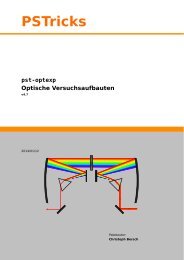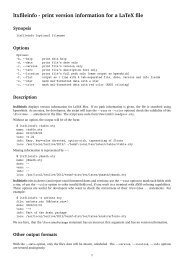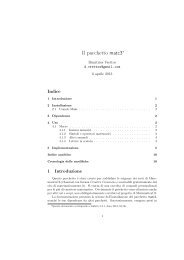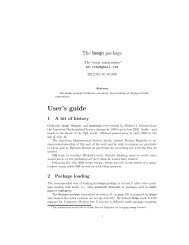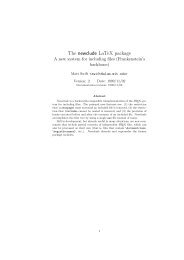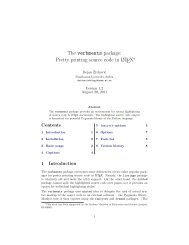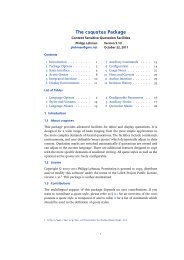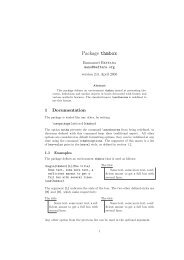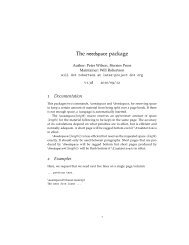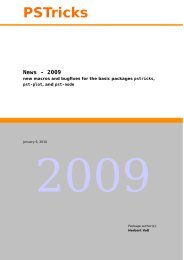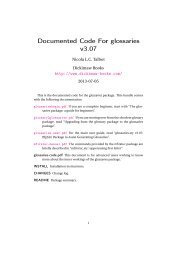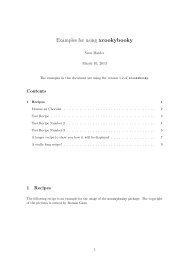User's Guide to suftesi - CTAN
User's Guide to suftesi - CTAN
User's Guide to suftesi - CTAN
You also want an ePaper? Increase the reach of your titles
YUMPU automatically turns print PDFs into web optimized ePapers that Google loves.
\appendicesname{〈name〉} (default=Appendici)<br />
Changes in 〈name〉 the title printed by the \appendix command.<br />
\headbreak<br />
A manual break which is active for the table of contents but not in the text or in the headers.<br />
\xheadbreak<br />
A manual break which is active in the text and in the headers but not in the table of contents.<br />
\chapnumfont{〈name〉}<br />
Sets the font of the chapter number of style=elements and style=sufelements styles. The<br />
default is “pplj” (LATEX) or “Junicode” (XE LATEX):<br />
\chapnumfont{pplj}<br />
\chapnumfont{\fontspec[Numbers=OldStyle]{Junicode}}<br />
\<strong>to</strong>clabelspace{〈label-width〉}<br />
Sets the width of \thecontentslabel.<br />
\xfootnote{〈symbol〉}{〈footnote text〉}<br />
A command <strong>to</strong> print a footnote with a discretionary symbols given in the optional argument<br />
(default=*). It does not increment the footnote counter.<br />
\xfootnote[*]{Footnote text.}<br />
\xfootnote[$\dagger$]{Footnote text.}<br />
\xfootnote[\textdagger]{Footnote text.}<br />
21



